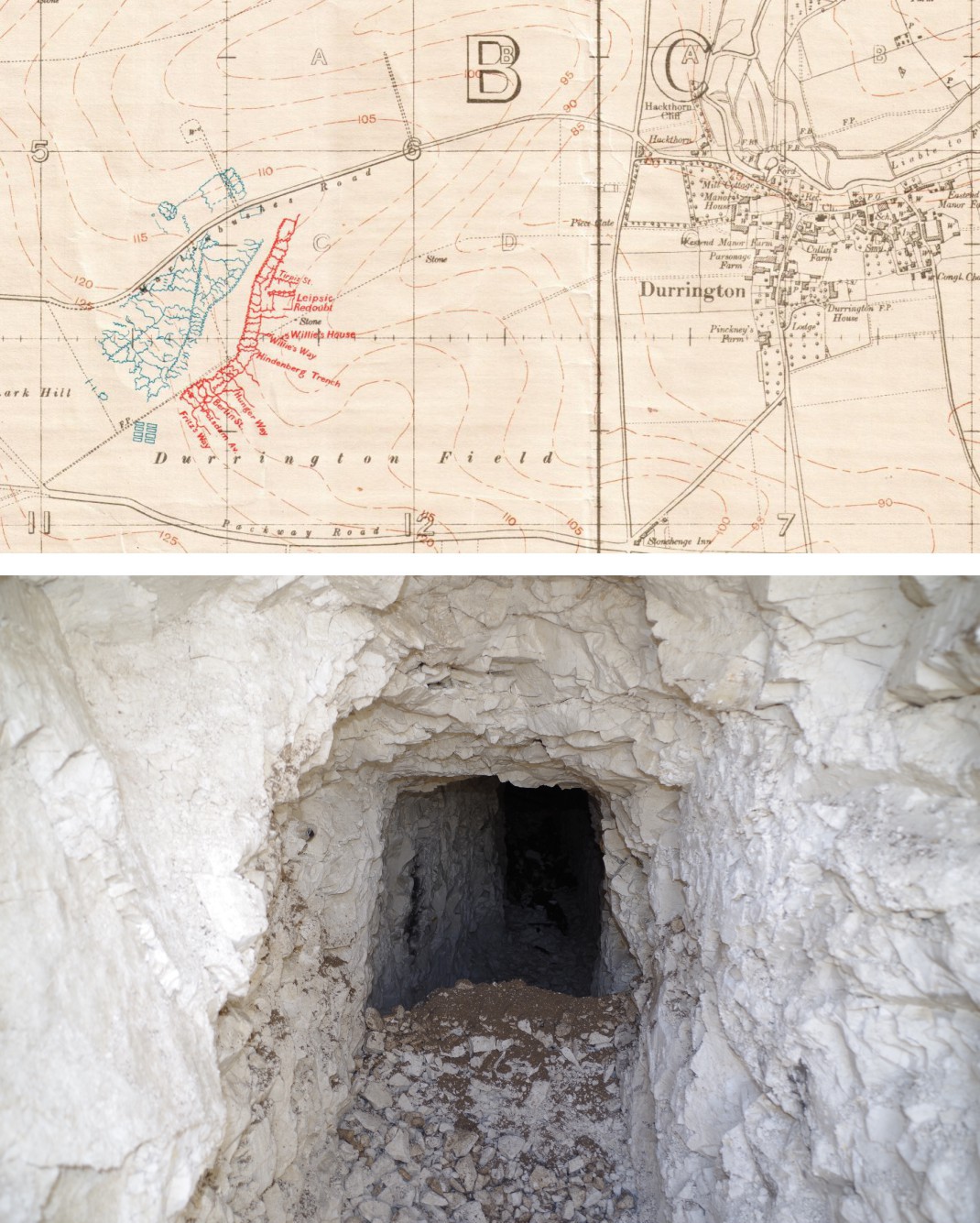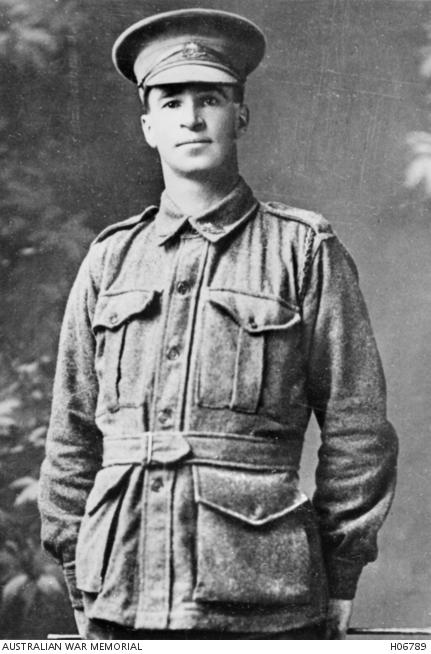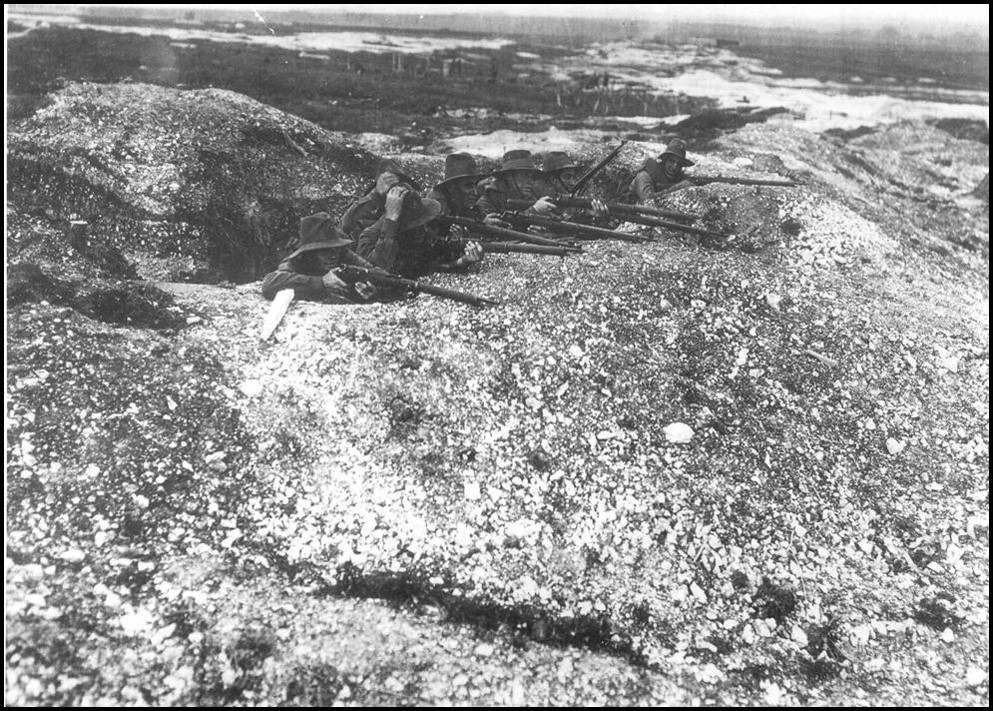
Lawrence Carthage Weathers VC
Wessex Archaeology working in Wiltshire has identified a unique network of First World War tunnels under Salisbury Plain. The tunnels are part of a First World War battlefield used to train men to fight in and under the trenches of France and Belgium. The soldiers have left the mine galleries deep in the Wiltshire chalk but they have also left their names – over a hundred inscriptions written by soldiers training on Salisbury Plain between 1915 and 1918.
Martin Brown (WYG) Archaeological Consultant to the Army Basing Project said:
‘This is the first time anyone has found and excavated tunnels used to train the sappers and miners before they were deployed overseas. We have found them as part of the largest single investigation of First World War training trenches anywhere in the world. Our excavations have revealed this story for the first time. That we didn’t expect these underground remains shows that much is left to be discovered, even from only a century ago.’
The tunnels are beneath a network of trenches that recreate the battlefields of France. Wessex Archaeology has cleared 8 km of trenches, working alongside bomb disposal specialists Bactec as significant numbers of grenades were still live.
Men from Australia, New Zealand and Canada travelled to Larkhill in their thousands to train on this unique battlefield alongside British troops after their enthusiastic enlistment.
In the process of excavating the trench systems, our archaeologists often came face to face with graffiti carved into the chalk entrances to tunnels. Many of our archaeologists are of a similar age to that of the soldiers who left their mark here, and to stand in their footsteps and read their names almost a hundred years to the day was a deeply profound experience.
A significant proportion of the graffiti was left by Australian soldiers – often recording names, service numbers, unit details and on some occasions, cartoon-like figures.
We hope that further research will enable us to understand the stories of these men. It is hoped that descendants of the soldiers will take part in this endeavour by adding greater levels of detail through stories, diaries and photographs.
The Australian War Memorial hold service records for huge numbers of servicemen and already, Wessex Archaeology staff have found themselves looking in to the eyes of the graffiti artists by finding photographs! This has been an incredibly moving experience.
The Australian War Memorial reminds us that:
‘For Australia, the First World War remains the costliest conflict in terms of deaths and casualties. From a population of fewer than five million, 416,809 men enlisted, of whom more than 60,000 were killed and 156,000 wounded, gassed, or taken prisoner.’
Having signed their names on enlistment in Australia, these men travelled nine and a half thousand miles to Larkhill where they signed their names in the chalk of Salisbury Plain. Their emblem ‘The Shivering Kangaroo’ provides an insight into the positively balmy temperatures the Aussies endured during their training here!
That training prepared the men for warfare above and below ground before their embarkation for the horrors of France and Belgium. Grenade training at Larkhill produced highly efficient ‘bombers’ who went on to clear enemy trenches whilst in the thick of it.

As Australia commemorates ANZAC Day, we would like to share an amazing find with you.
Corporal Lawrence Carthage Weathers was born in New Zealand before moving to Australia as a boy. After leaving school, Lawrence worked as an undertaker in Adelaide. In early 1916 and at the age of 26, Lawrence enlisted with the 43rd Battalion of the Australian Imperial Force and embarked for training at Larkhill in June 1916 and reached the Western Front by November 1916.
Lawrence was wounded several times and gassed in his time in the trenches. On 2 September 1918 near the village of Allaines during the battle of Mont Saint-Quentin, Lawrence- armed with grenades- stormed the trench parapets of well-defended enemy lines. Under withering fire, Lawrence delivered his grenades with great effect and ran back to his lines to collect more. Returning to finish the job, Lawrence cleared the enemy trenches allowing the capture of three machine guns and 180 German prisoners!
For his most conspicuous bravery and devotion to duty, Lawrence was awarded the Victoria Cross but sadly, he was killed during an artillery barrage on 29 September 1918 without knowing he would receive the honour.

Our archaeologists discovered a list of names pencilled on to a block of chalk at Larkhill that included that of L.C. Weathers.
Clearly then, his grenade training at Larkhill stood him in good stead, but no amount of training can provide bravery of that calibre. For our archaeologists it has been an awe-inspiring season of excavation. It is not every day that an archaeologist can stand in the footprints of people like Lawrence Weathers, read their names and know their fates.
There will be many, many more stories to tell of lives lived and lost during the tumultuous days of First World War. The unique Larkhill battlefield echoes with voices into the centenary years and we look forward to ensuring that you hear all of them.
Copyright historic images Australian War Memorial.